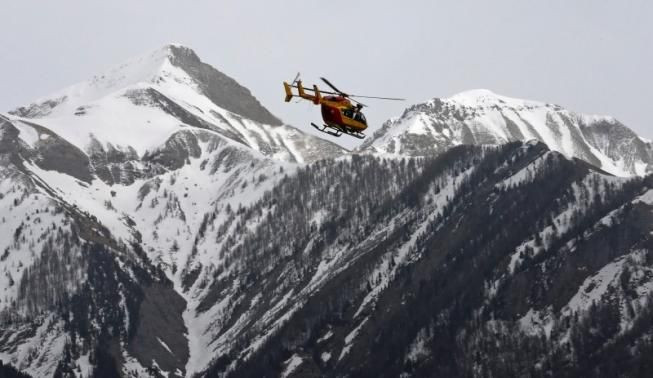Germanwings Crash: 6 Facts About French Alps Disaster Site Where Regular Avalanches Could Impede Recovery Efforts

Search and rescue teams have been deployed to a remote region in the French Alps where a Germanwings Airbus A320 crashed Tuesday. All 150 passengers and crew members on board are assumed to have died. The snow-covered mountainous terrain will make the investigation and recovery efforts difficult. Below are six facts to know about the crash site in the French Alps.
1. The location is difficult to access and will take time. French Interior Ministry spokesman Pierre-Henry Brandet told French news channel BFMTV he expected the search and rescue operation to be “extremely long and extremely difficult.” That’s because the site of the crash is surrounded by mountains with few clear trails into the snowy area, Éric Ciotti, the head of the regional council in southeast France, told the Associated Press. French President François Hollande said Tuesday that "it will take some hours for the emergency services to reach (the) crash site," according to Reuters.
2. The plane crashed far from human habitation. The nearest settlement is a two-and-a-half-hour walk from the crash site, according to the Telegraph. Eyewitnesses reported seeing the jet skim the mountain tops before crashing into the side of the 9,000-foot-plus Estrop massif about 100 miles north of Nice, according to the Independent.
3. Vehicles cannot access the crash site. French Transport Minister Alain Vidalies said units have yet to reach the crash site on foot. But police helicopters have spotted scattered debris and bodies in the mountainous zone, which is at an altitude of about 6,550 feet. “It is an area that is snow-capped, inaccessible by vehicles, but which could be flown over by helicopters," Vidalies said, according to the Local.
4. Avalanches are typical in the region. Mountain guides and local officials said the location of the plane crash has "very deep" snow and suffers from regular avalanches that will impede recovery efforts. “The plane came down in very steep mountain terrain, which is plagued by avalanches at this time of year. There was an avalanche just 10 minutes ago," Bruno Lambert, a mountain guide in the same village, told the Independent.
Pierre Polizzi, who owns a campsite in the Alps near the crash site, told the AP that "the mountain is snowy and very hostile.” Polizzi added that he heard loud noises around 11:30, local time, but he often hears fighter jets flying overhead.
5. Weather conditions should remain calm Tuesday, but winds are expected to pick up Wednesday. Vidalies said the weather conditions "were not particularly bad" at the crash site, according to the Local. The weather will remain sunny and clear for the rest of the day, but strong winds are forecast in the area for tomorrow, a meteorologist with MétéoNews reported.
6. Bad weather in the area has hampered search and rescue efforts in previous aviation crashes. In 1966, an Air India Boeing 707 crashed near the summit of Mount Blanc in the French Alps, killing all 117 passengers and crew members on board, according to BBC News. The aircraft was flying from Mumbai (then known as Bombay) and crashed as it prepared to land at Geneva airport in Switzerland. Search and rescue teams discovered wreckage scattered on the southwest side of the mountain. “Everything was completely pulverized. Nothing was identifiable except for a few letters and packets,” Gerard Devoussoux, a mountain guide who was one of the first to arrive at the crash site, told BBC News. Upon arriving on scene, French authorities said there was no hope of survivors. Rescue efforts were hampered by bad weather and poor visibility, and the search was eventually called off, according to BBC News.
In 1950, an Air India Constellation flying from Cairo to Geneva also crashed near Mount Blanc in the French Alps, killing 48 passengers and crew, according to BBC News.
© Copyright IBTimes 2025. All rights reserved.





















